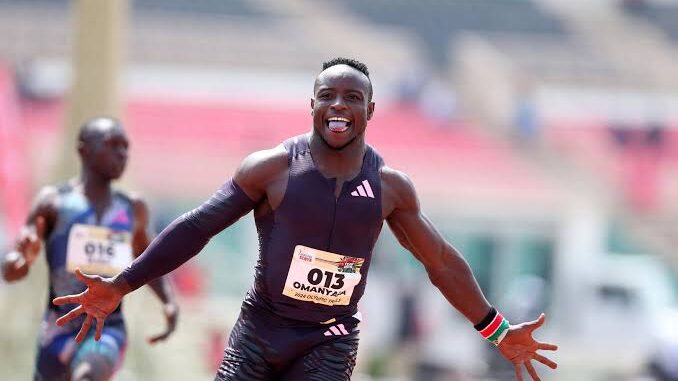
For decades, a subtle yet persistent narrative has echoed through the athletics world: African runners, especially from East Africa, are best suited for long-distance and marathon events. From the hills of Kenya and Ethiopia to the streets of Boston and Berlin, this belief has been reinforced by generations of dominant marathon champions. Yet, Ferdinand Omanyala, Kenya’s sprint sensation, has boldly challenged that stereotype, showing that talent from the continent is not bound by event or tradition.
Omanyala’s rise in the world of sprinting has been nothing short of revolutionary. Traditionally, Kenya’s athletic identity has been shaped by endurance legends such as Eliud Kipchoge, Tegla Loroupe, and Paul Tergat. The country’s training culture, terrain, and global image have all leaned toward distance running. For a Kenyan athlete to step away from the path of marathons and half-marathons was once seen as risky — almost career-defining in the wrong direction. Yet Omanyala embraced that challenge, refusing to be boxed in by history.
The myth Omanyala has defied is twofold: that African sprinters can’t compete at the highest level in short sprints, and that East African athletes lack the physiological build to rival the best in 100m and 200m events. It’s a stereotype rooted less in science and more in tradition. West African and Caribbean sprinters have historically dominated the sprints, while East Africa reigned over endurance. This division became so accepted that few even questioned it — until Omanyala arrived.
With his explosive start, powerful stride, and fearless racing style, Omanyala has rewritten expectations. In 2021, he became the fastest man in Africa, clocking sub-10 seconds in the 100m — a barrier few believed a Kenyan could break. His times have placed him among the elite sprinters in the world, proving that speed is not a matter of geography. In doing so, he has inspired a new generation of young Kenyan athletes to consider sprinting as a viable career path.
The significance of Omanyala’s journey extends beyond the track. By excelling in an event that Kenya is not historically known for, he has broadened the country’s sporting identity. His success challenges the idea that athletes must conform to their nation’s traditional strengths. It’s a message that speaks to ambition, self-belief, and the courage to pursue unconventional goals.
Omanyala’s training methods also differ from those of typical Kenyan runners. While marathoners focus on high-altitude endurance work, Omanyala’s regimen is built around explosive power, muscle conditioning, and sprint mechanics. His commitment to strength training and speed drills shows that Kenyan athletes can adapt to, and excel in, the demands of sprinting with the right resources and coaching.
In a sense, Omanyala’s story is about rewriting the mental map of global athletics. He has reminded the sporting world that talent knows no borders, and tradition should never limit potential. The “marathon myth” — that Kenya’s greatest athletic glory will always lie in distance running — now has a powerful counterexample thundering down the straightaway.
Omanyala hasn’t just run fast. He’s run against history, against expectation, and against the quiet but stubborn myths that have long shaped the way the world sees African athletes. And in doing so, he has proved that sometimes the most important race is the one no one believes you can win.
Be the first to comment